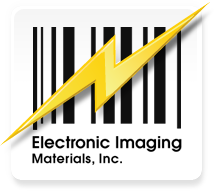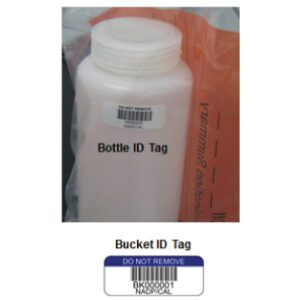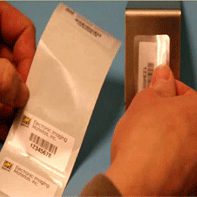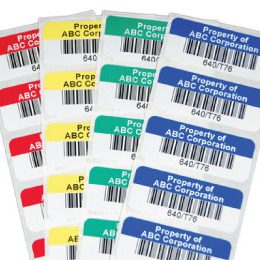In many laboratories, managing samples, reagents, and equipment is a daily challenge. Each lab has its own unique set of requirements. Some handle delicate specimens stored in ultra-cold freezers, while others work with hot environments or harsh chemicals.
Standard labels might work fine for common tasks, but what if your lab needs something more specialized? The good news is that it’s possible to get custom laboratory labels designed to fit your specific operations. Learn how to implement custom labeling solutions to save time, reduce errors, and keep your lab running smoothly.
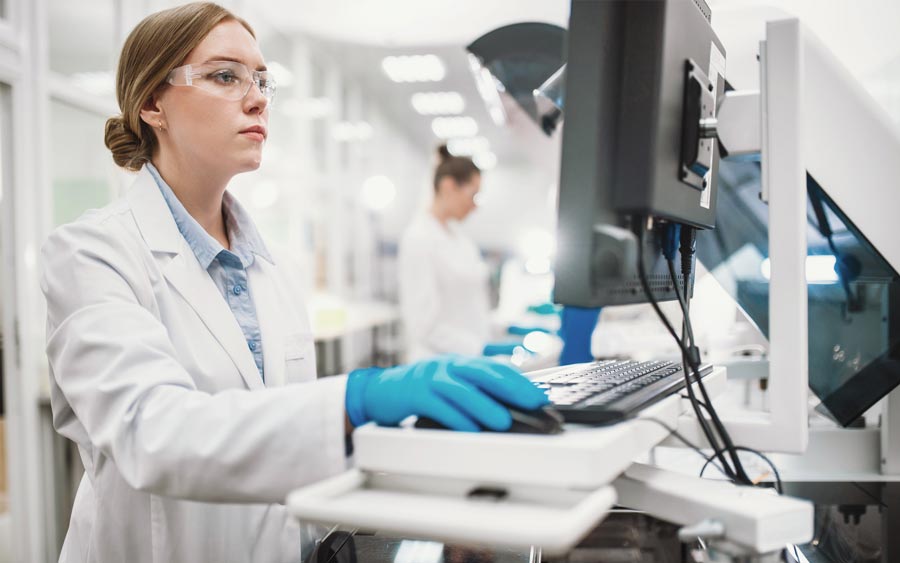
What’s the Need for Customization?
Not all labs are alike. One may need labels that survive cryogenic storage at -196°C, while another requires heat-resistant materials that tolerate autoclave sterilization. Some labs operate in damp or humid conditions, while others handle chemicals that can damage standard labels. In many cases, the samples or equipment being labeled are of unusual shapes or sizes, making off-the-shelf solutions less effective.
Custom laboratory labels allow you to choose materials, sizes, colors, and formats that meet the exact conditions of your lab. With the right customization, you can create a label that stays attached and readable under the toughest conditions. Whether you’re dealing with moisture, freezing temperatures, chemical exposure, or high heat, there are materials and adhesives designed to handle it. It’s also possible to add features like tamper evident labels, which show if someone tries to remove or alter the label, ensuring sample integrity and security.
The Best Material Choices for Challenging Conditions
When selecting custom laboratory labels, one of the first considerations is the material. Different materials handle different environments:
- Heat-Resistant Materials: Some labels must endure sterilization in an autoclave, where temperatures can exceed 120°C. Heat-resistant materials remain legible and stick firmly, even after repeated cycles of heating and cooling.
- Waterproof and Moisture-Resistant Materials: Labs that rely on water baths, or face high humidity, need waterproof labels that won’t peel or smudge. Such labels maintain clarity and adhesion in damp environments.
- Chemical-Resistant Materials: If your lab works with solvents, acids, or cleaning agents, chemical-resistant materials can help. These labels resist fading, smearing, or weakening when exposed to harsh substances, ensuring that important data remains intact.
- Cryogenic-Friendly Materials: For labs storing samples in liquid nitrogen or ultra-low freezers, cryogenic materials are a must. These labels stay put even when placed on already-frozen surfaces, preventing them from curling or falling off as temperatures fluctuate.
By choosing materials matched to your conditions, you create custom laboratory labels that last longer and maintain readability. This increases efficiency, as staff spend less time re-labeling items or trying to decipher damaged prints.

The Importance of Size and Shape
From tiny vials to large storage boxes, labs contain a variety of surfaces that need labeling. Standard labels may be too large, too small, or simply not shaped correctly for your equipment. Custom labels solve this problem by offering a range of sizes and shapes:
- Small Vials and Tubes: These often have very limited surface area. Custom laboratory labels designed for small items fit snugly without unnecessary overlapping or covering important markings on the vial.
- Slides and Plates: Thin surfaces like microscope slides and culture plates need labels that don’t obscure viewing areas or stack poorly. Customizing label dimensions ensures that each label fits neatly, improving workflow and preventing mix-ups.
- Large Storage Boxes: Bigger containers may require more information, such as a barcode, batch number, and safety symbols. Custom labels allow for larger sizes that hold additional text, graphics, or color blocks.
- Unusual Shapes: If your lab uses equipment with curved or angled surfaces, standard rectangles might not adhere well. Custom barcode labels can be cut into unique shapes that stick smoothly to irregular surfaces, preventing peeling and ensuring a professional look.
By selecting the right size and shape, you improve label performance. Well-fitted labels are less likely to catch on edges, peel away, or become unreadable. They also help maintain a clean, organized lab appearance, which can boost confidence during audits and inspections.
Don’t Forget Colors and Layouts
Color coding is a powerful tool for organizing a busy lab. Different colors can quickly signal hazard levels, indicate sample types, or guide technicians to the right storage area. Custom laboratory labels let you pick colors, layouts, and even branding elements that best serve your workflow:
- Color Coding: Assign a specific color to certain departments, projects, or sample types. A quick glance at a color-coded label can tell a technician exactly how to handle the item or where it belongs, speeding up decision-making and reducing mistakes.
- Logos and Branding: Some labs want to include their institution’s logo or department name. Custom labels make it easy to add branding, helping items stand out and promoting a sense of identity and professionalism.
- Information Layout: Need multiple lines of text, special symbols, or safety icons? Custom layouts allow you to arrange information logically, ensuring that barcode, text, and symbols don’t overlap or create confusion.
- Tamper-Evident Labels: For samples that require heightened security, adding tamper-evident labels is a smart move. These labels feature designs that break or leave a mark when someone attempts to remove them. By customizing layouts and colors, you can integrate tamper evidence seamlessly into your labeling system.
The right combination of color, layout, and security features improves efficiency. Well-designed labels reduce the time spent reading small print or guessing what’s inside a container, making the entire labeling process smoother.
Proper label customization takes knowing the top features to look for. Read our comprehensive guide to make sure you’re getting the most out of our labels.
How Knowing Barcode Type Can Ensure Compatibility with Your Systems
Many labs rely on barcode scanning to track samples quickly and accurately. However, not all barcode systems are the same. Some labs prefer QR codes for storing large amounts of data, while others stick to traditional 1D barcodes. Custom barcode labels offer flexibility in choosing the right code type:
- 1D vs. 2D Barcodes: One-dimensional (1D) barcodes are simple and widely used. Two-dimensional (2D) codes like QR codes or Data Matrix codes can store more data in a smaller space. Custom labels let you pick the format that best fits your lab’s scanning systems and data storage needs.
- Compatibility with Existing Scanners and Software: Your current equipment may only read certain symbologies. By working with a knowledgeable label provider, you can ensure that the chosen barcode type is fully compatible with your scanners and inventory software. This reduces scanning errors, speeds up sample handling, and supports strong data management.
- Future-Proofing: As technology evolves, you might decide to adopt more advanced barcode types. Starting with custom barcode labels that can be easily re-ordered or updated means you can adjust as needed, rather than overhauling your entire labeling system.
By choosing barcodes wisely, you keep your operations running smoothly. Technicians can scan items quickly and confidently, knowing the labels are designed with the lab’s specific systems in mind.
How to Get Started With the Personalization Process:
Adopting custom labels doesn’t have to be complicated. With a step-by-step approach, you can identify the best options and implement them in your lab:

Initial Consultation
Start by discussing your needs with an account manager or labeling expert. They’ll ask questions about your lab’s environment, the types of surfaces you label, and any special conditions like exposure to heat, freezing temperatures, chemicals, or moisture. This information helps narrow down the materials, adhesives, and barcode types that fit your situation.

Defining Requirements
After gathering details, options are organized into categories based on durability, adhesion, and other factors. If you have unusual requirements—such as tiny tubes or autoclave sterilization—these are considered carefully. You might also discuss whether you want to print labels yourself or need a custom shape not readily available. In this stage, you learn about the range of custom laboratory labels that suit your lab’s unique conditions.

Selecting Materials and Designs
With guidance from the account manager, pick the materials, sizes, colors, and layouts that match your lab’s workflow. If you need chemical-resistant materials or cryogenic-friendly adhesives, these choices are presented. Layouts can include room for barcodes, text, logos, and even tamper evident labels if security is a concern.

Requesting Samples
Before placing a large order, most reputable suppliers provide 2-3 sample sets. Test these samples in real lab conditions. Apply them to vials, run them through temperature cycles, expose them to chemicals, or try to scan the barcodes under normal working conditions. By testing samples, you ensure that the chosen custom labels live up to their promises.

Approval and Ordering
Once you’ve tested the samples and confirmed they meet your standards, it’s time to place an order. While custom barcode labels are generally more expensive than standard ones, the benefits outweigh the extra cost. Improved workflow, fewer labeling errors, and better compliance can save money and time in the long run.

Cost Considerations
It’s true that custom laboratory labels may cost more than off-the-shelf options. Designing labels with special materials, or shapes involves additional steps and resources. However, the investment can pay off over time. Fewer mislabeled samples, less time spent reapplying labels, and reduced errors can all contribute to greater efficiency.
Moreover, properly chosen custom labels can strengthen compliance efforts. When every sample is clearly and correctly identified, audits and inspections become less stressful. The confidence gained from a well-functioning labeling system often justifies the extra expense.
The Bottom Line
In laboratory work, no two operations are identical. Custom laboratory labels allow you to break free from the limitations of standard options. By selecting materials that withstand your conditions, sizing labels to fit any surface, customizing colors and layouts for quick recognition, and choosing barcodes compatible with your systems, you create a labeling strategy that truly meets your lab’s needs.
While custom labels might come with a higher price tag, the benefits—improved efficiency, better compliance, fewer mistakes, and a smoother workflow—often make the investment worthwhile. With a thoughtful approach and expert guidance, implementing custom laboratory labels can help your lab run more smoothly, maintain a high standard of quality, and adapt to new challenges as they arise.
If your lab faces unique challenges, consider exploring personalized solutions. Reach out to a knowledgeable provider, like Electronic imaging Materials who can work closely with you, asking the right questions, offering samples, and guiding you toward a labeling system that fits like a glove. By embracing customization, you set the stage for a more organized, efficient, and confident laboratory operation.
Upgrade Your Lab Labeling with EIM’s Custom Solutions
Ready to take your labeling system to the next level? Contact Electronic Imaging Materials for expert guidance and high-quality, custom laboratory labels designed to fit your lab’s unique needs—get a free sample today!
